Imagine a line that divides two worlds, that when breached,
is in fact a portal into a completely parallel universe.
Where people of essentially the same origins live and,
yet, are nurtured so differently by history and ideology.
This is not the realm of science fiction but a reality
that is centred around the 38th Parallel North
and has been ongoing for almost 75 years.
The popularity of the Korean Netflix series, Crash Landing On You, has sparked a popular culture interest in North Korea. In 2015 I traveled to the deeply secretive state, documenting my experiences throughout my seven days there. I recently spoke about my adventures and photography whilst inside the infamous Hermit Kingdom with Stephanie Zubiri and Tatler Philippines.
Travel and adventure photographer Scott A. Woodward shares his experience and photos of the deeply isolationist country of North Korea where we discover a unique world suspended in time and a glimpse of a real life Captain Ri.
Imagine a line that divides two worlds… that when breached, is in fact a portal into a completely parallel universe. Where people of essentially the same origins live and, yet, are nurtured so differently by history and ideology. This is not the realm of science fiction but a reality that is centred around the 38th Parallel North and has been ongoing for almost 75 years.
This is the stage for the indulgent and captivating drama that is akin to a hybrid between Alice in Wonderland and Romeo and Juliet — the Korean telenovela, Crash Landing On You. A wealthy young woman from South Korea, while paragliding, accidentally lands in the Demilitarized Zone falling into the arms of a handsome North Korean military officer. The series has consistently topped Netflix ratings for its classic star-crossed lover romance plot and excellent production value. And while the dreamy and dashing Captain Ri, played by South Korean actor Hyun Bin, has become the object of fantasy for throngs of women in lockdown, there is another aspect of the series that has piqued the audience’s imagination: North Korea.
North and South Korea could not be more different. The latter is modern, fast paced and diplomatically connected with efforts to expand their culture and technology across the globe. The former, officially known as the Democratic People’s Republic of Korea, is shrouded in mystery with a deeply isolationist and totalitarian regime. The DPRK is a socialist, one-party state that promulgates juche — a pervasive doctrine of self-reliance that has Marxist and Confucianist roots mixed with extreme nationalism. This was created by their founding leader, the late Kim Il-sung, and endures until today.
With a tightly controlled media and extremely stringent travel restrictions — less than 5,000 western tourists visit annually — access to the mysterious nation is very limited. We thought we would reach out to travel and adventure photographer, Scott A, Woodward, to share with us a glimpse of what life is like above the 38th Parallel.
“For as long as I can remember, I have been fascinated by North Korea, longing to travel to the infamous Hermit Kingdom and experience it firsthand,” he shares. “Finally, in October 2015 — after many years of unsuccessful attempts — I was able to secure a visa to travel to the DPRK for seven days during the national celebrations commemorating the 70th anniversary of the founding of the Worker’s Party of Korea, the lone ruling regime of the country’s 24 million citizens.”
As expected, the celebration was a lavish affair, yet thoroughly scripted and Woodward, always on the lookout for “the moment between the moment” persisted in finding snippets of real life. “I expected this demonstration of might, showing the world and reassuring the collective that North Korea is strong, its leadership firmly in control. But the DPRK’s theatrics are not limited to such occasions. I quickly learned that catching a glimpse of real life in the DPRK is nearly impossible,” he further explains. “On the rare occasions when we were permitted to marvel upon a garish monument, wander an empty square or gape at an elaborate show, I was more interested in what was happening backstage than in what was taking place at center stage, much to my minders’ chagrin.”
This collection of documentary photography represents his experience “as an audience member marveling at the rehearsed mass spectacle that is North Korea, but also as a willing cast member peaking behind the curtain, glimpsing brief and unscripted moments of the Hermit Kingdom’s individual people.”
Read more about my experiences from inside North Korea in Travel + Leisure Southeast Asia and browse more of my DPRK reportage that has exhibited at photography festivals around the world.
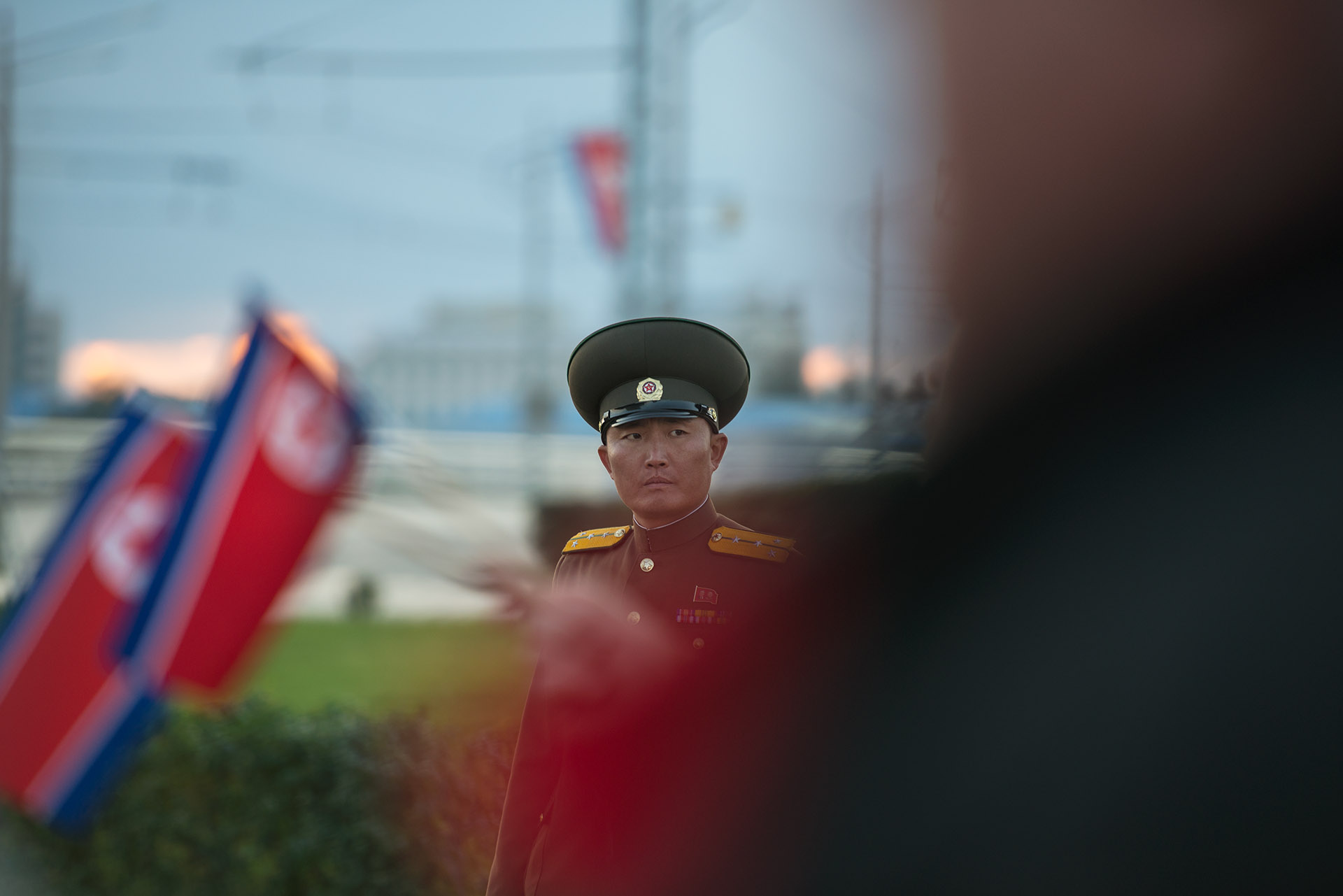
A real life Captain Ri scans the crowd during the Party Foundation Day parade in Pyongyang.
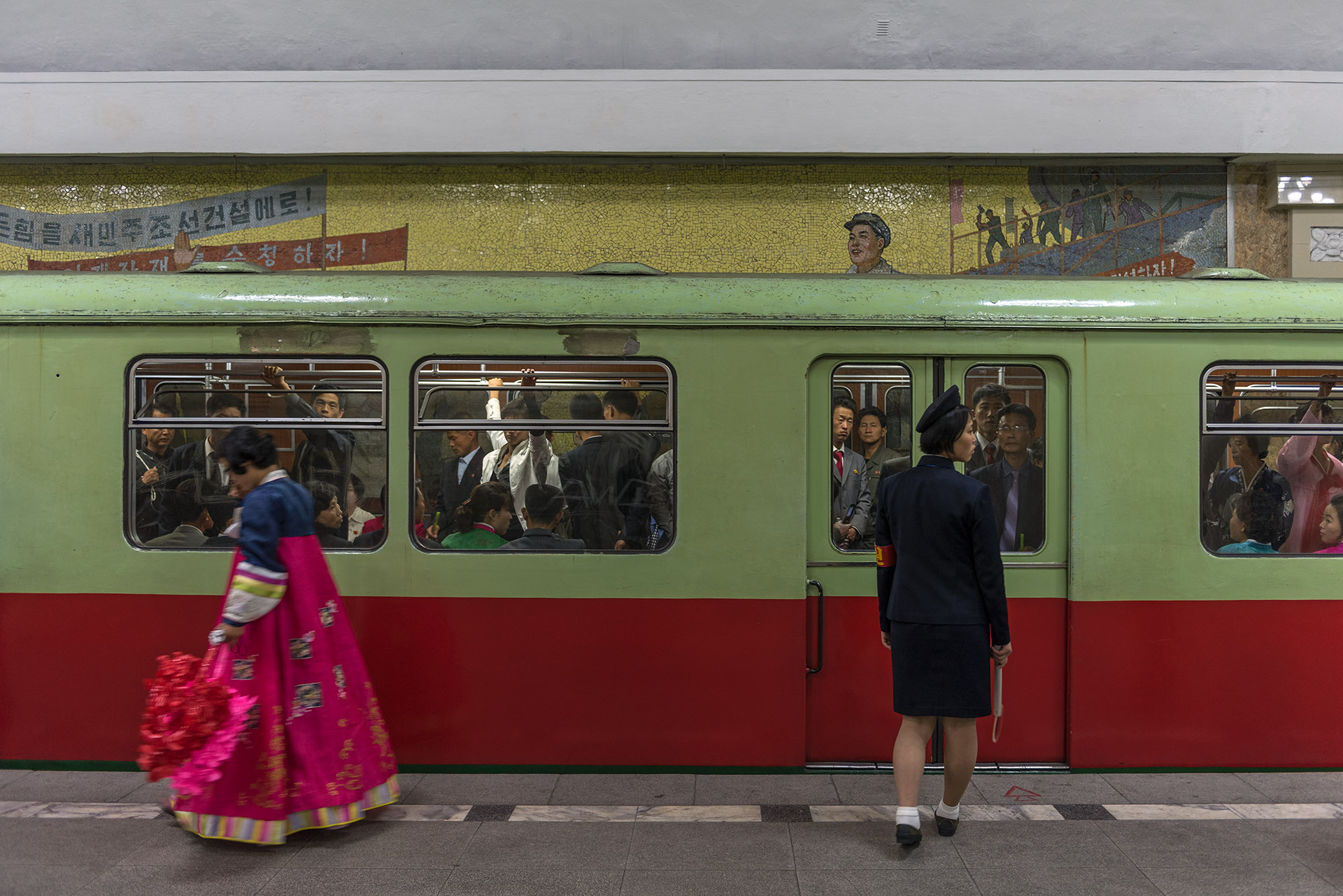
A train waits to depart Triumphant Return (Kaeson) Station in Pyongyang. At approximately 110 metres underground, the Pyongyang Metro is one of the world’s deepest subway systems, taking an escalator ride of more than three minutes to reach street level.

A groom and his wedding party playfully arm wrestle on a table at the Koryo History Museum outside Kaesong. The museum is a testament to Kaesong’s rich history — it was the capital of Koryo from 918-1392 — and is a popular location for newly married couples to come on their wedding day.
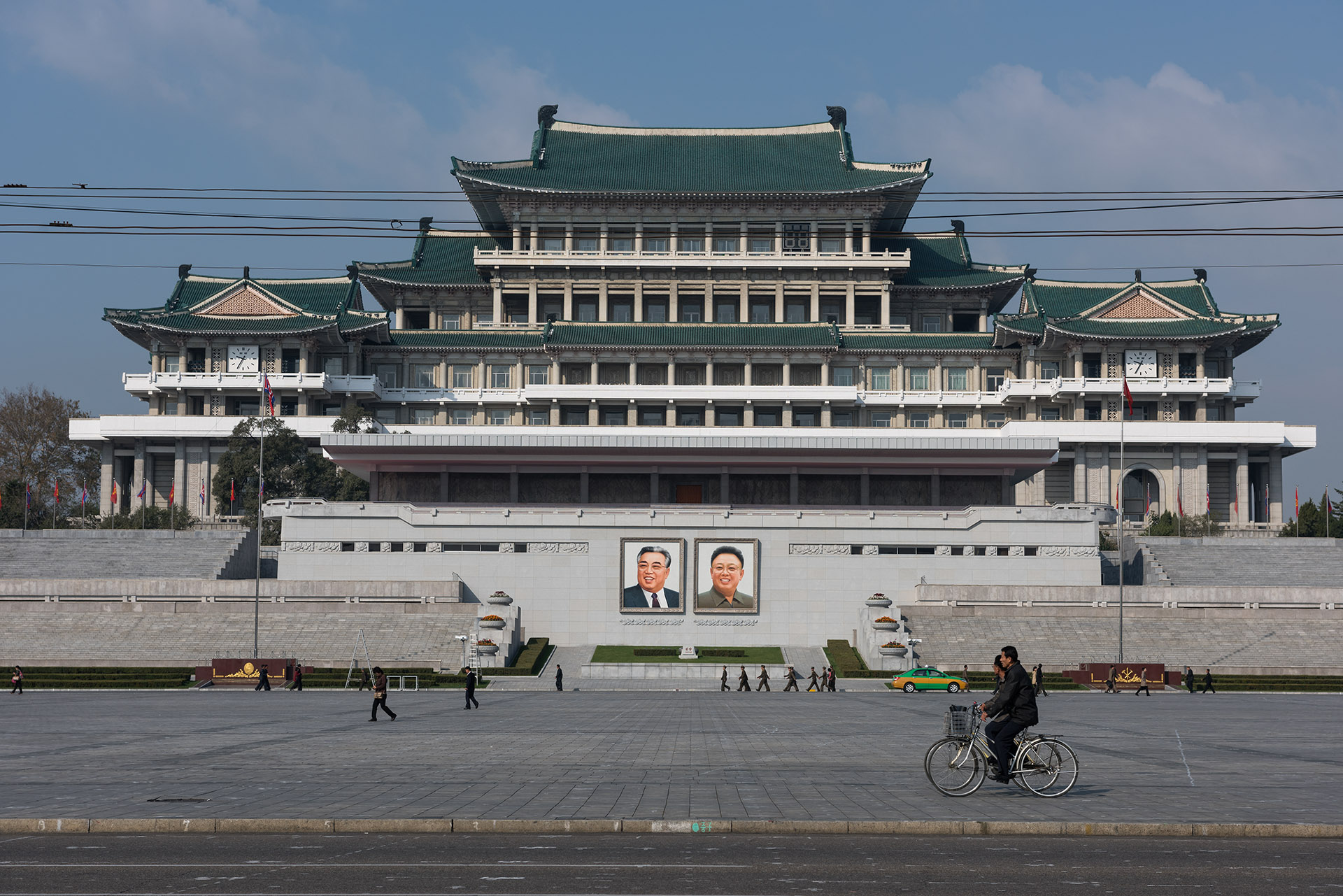
Men cycle past portraits of late North Korean leaders Kim Il-sung and Kim Jong-il in Pyongyang’s vast Kim Il-sung Square. Such images of the venerated deceased leaders are ubiquitous on government building façades and inside every home, office and school throughout the DPRK.
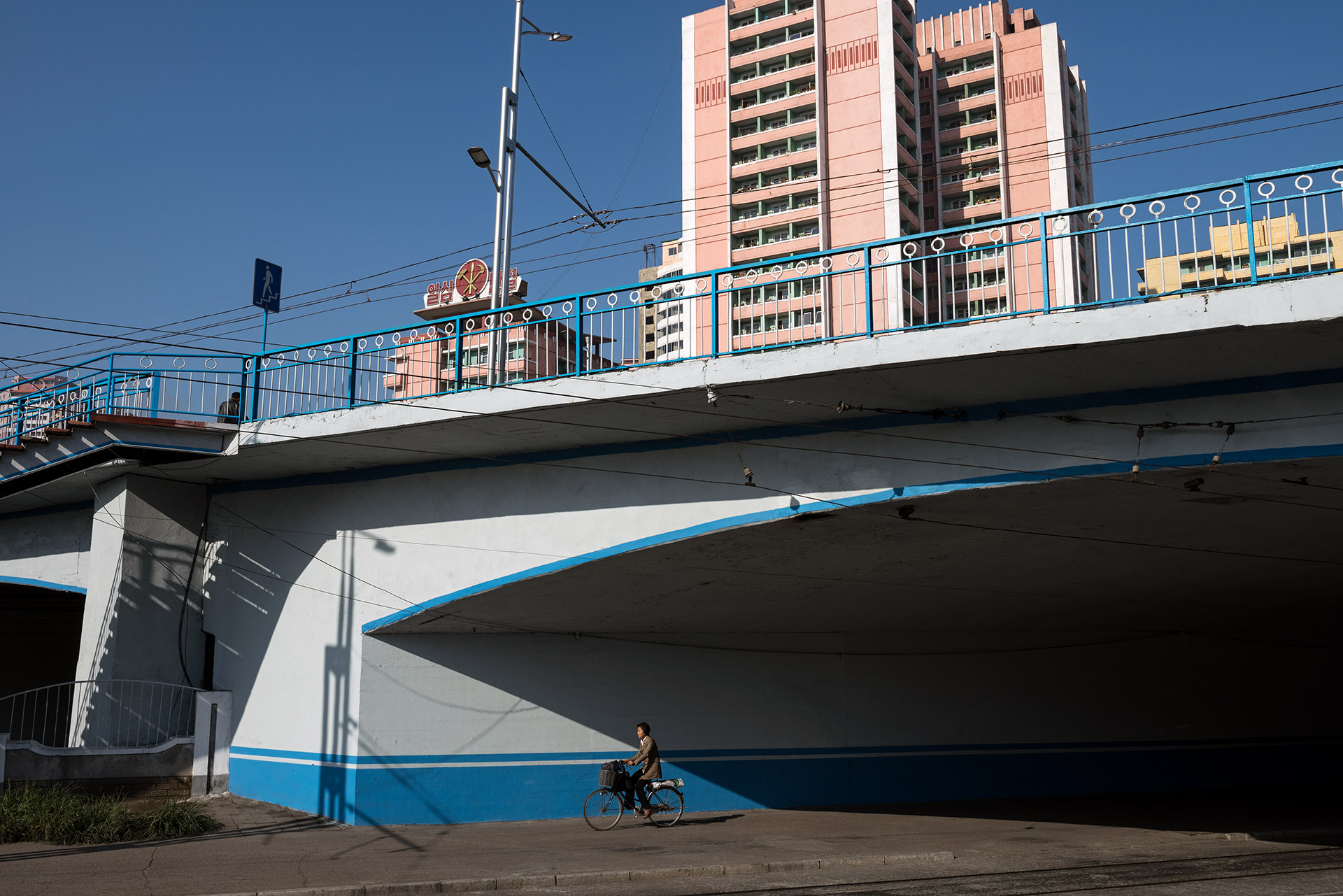
A lone woman rides her bicycle along a quiet pathway in central Pyongyang. In a nation where private car ownership is extremely rare, bicycles are a common mode of transport for many North Koreans.
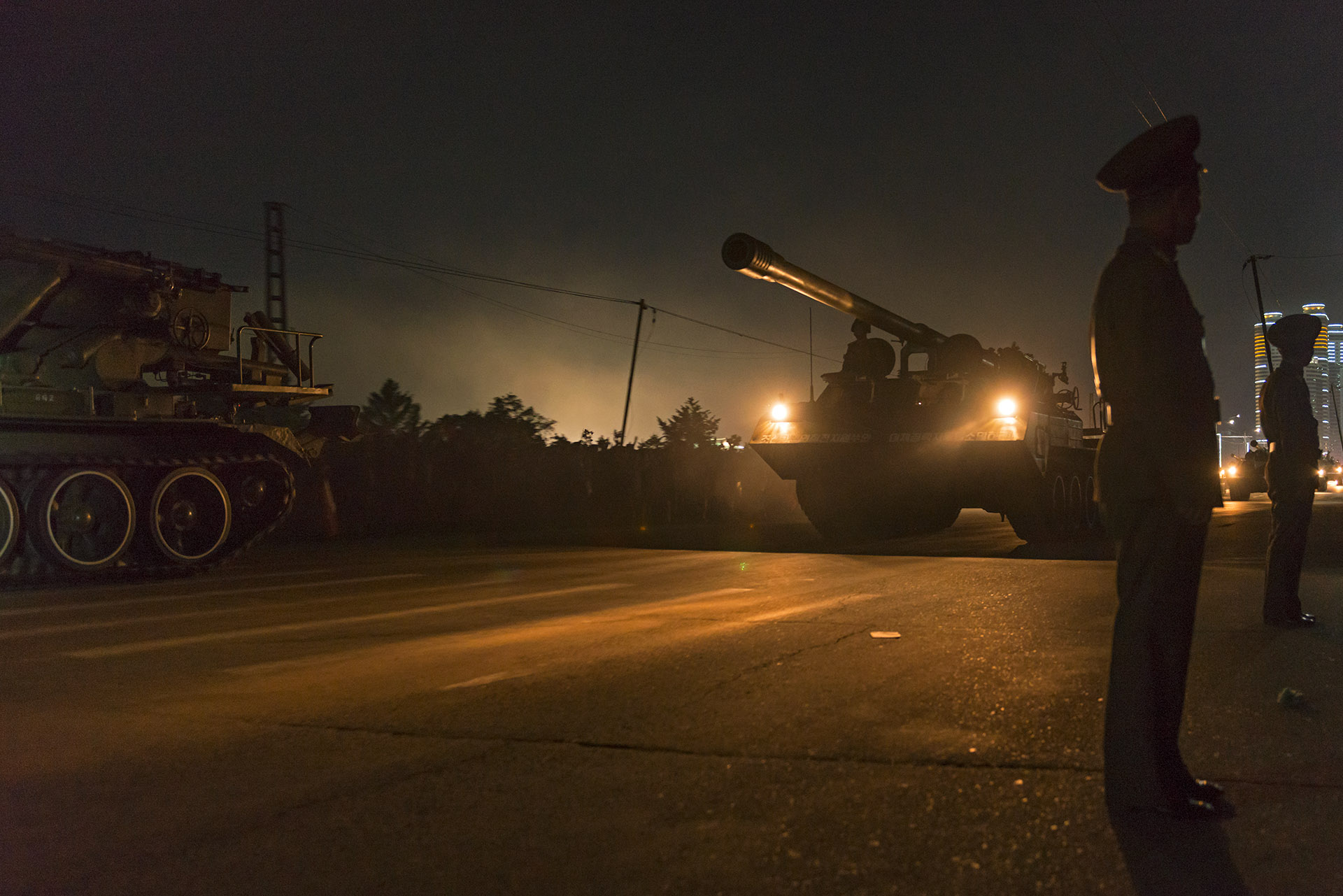
Soldiers line the street as tanks and other military vehicles thunder past during the Party Foundation Day parade commemorating the 70th anniversary of the establishment of the Worker’s Party of Korea, the lone ruling regime of the DPRK’s 24 million citizens. The regime’s pageantry was a lavish affair: a meticulously choreographed performance featuring thousands of goose-stepping soldiers and a legion of military vehicles rolling through Kim Il-sung Square, and then thundering along Pyongyang’s boulevards, thronged by flower-and flag-waving masses.
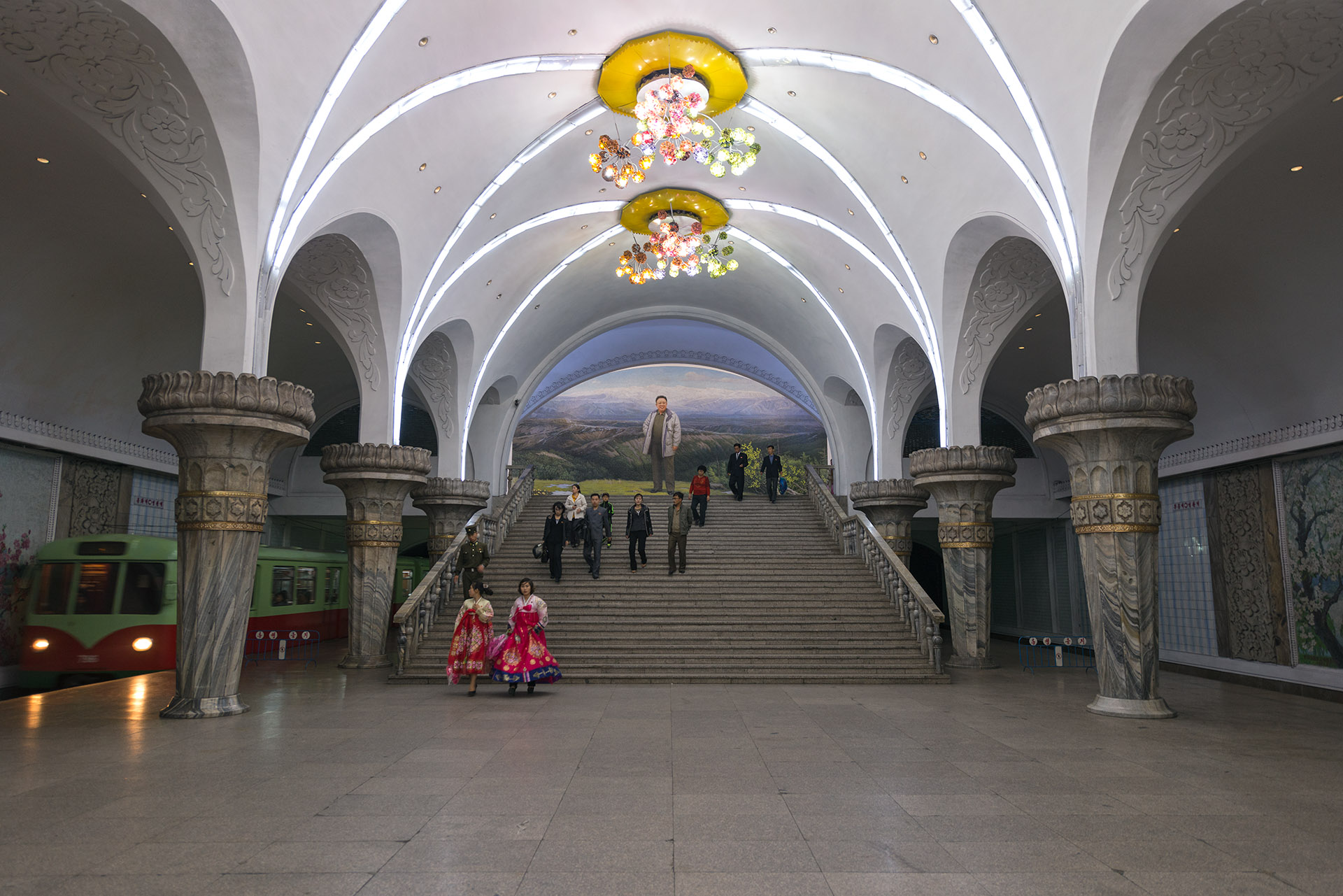
North Koreans descend the stairs as a train rolls into Glory (Yŏnggwang) Station. Constructed in the 1970s, and inspired by subway networks in other communist nations, each of Pyongyang’s 16 stations are decorated with ornate chandeliers, intricate mosaics of joyous labourers and giant murals and statues of the DPRK’s Great Leader, Kim Il-sung, and his son, the Dear Leader, Kim Jong-il.
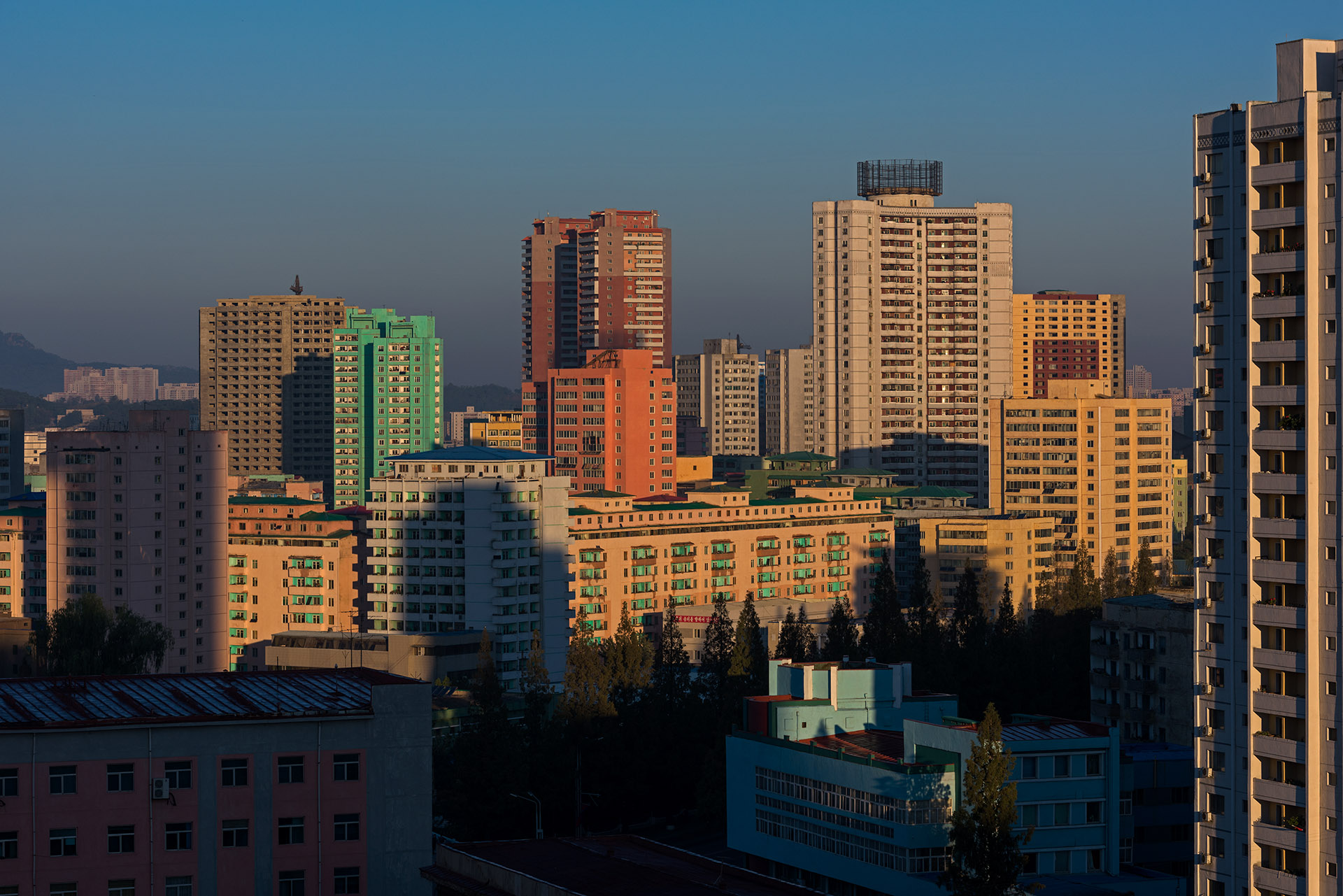
A Pyongyang sunrise city view from a window in the 43-storey, twin-towered Koryo Hotel. With rare exception, the DPRK government owns all property in North Korea, building and assigning homes to its citizens.
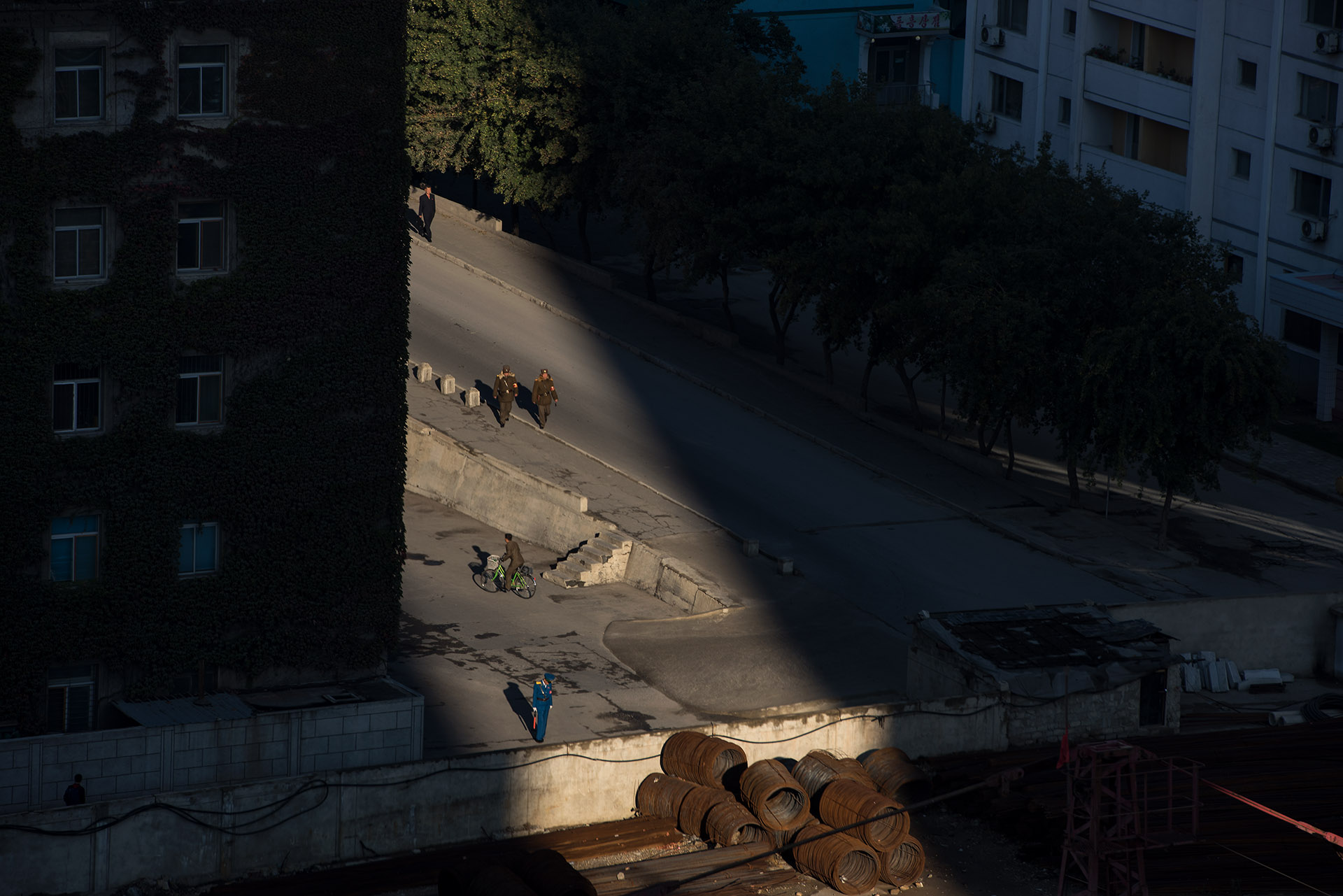
Morning light slices the pavement outside the Pyongyang Koryo Hotel. Contrary to the colorful scenes that were presented to us, this candid and unscripted moment casts a light on the uniformity of life in North Korea.
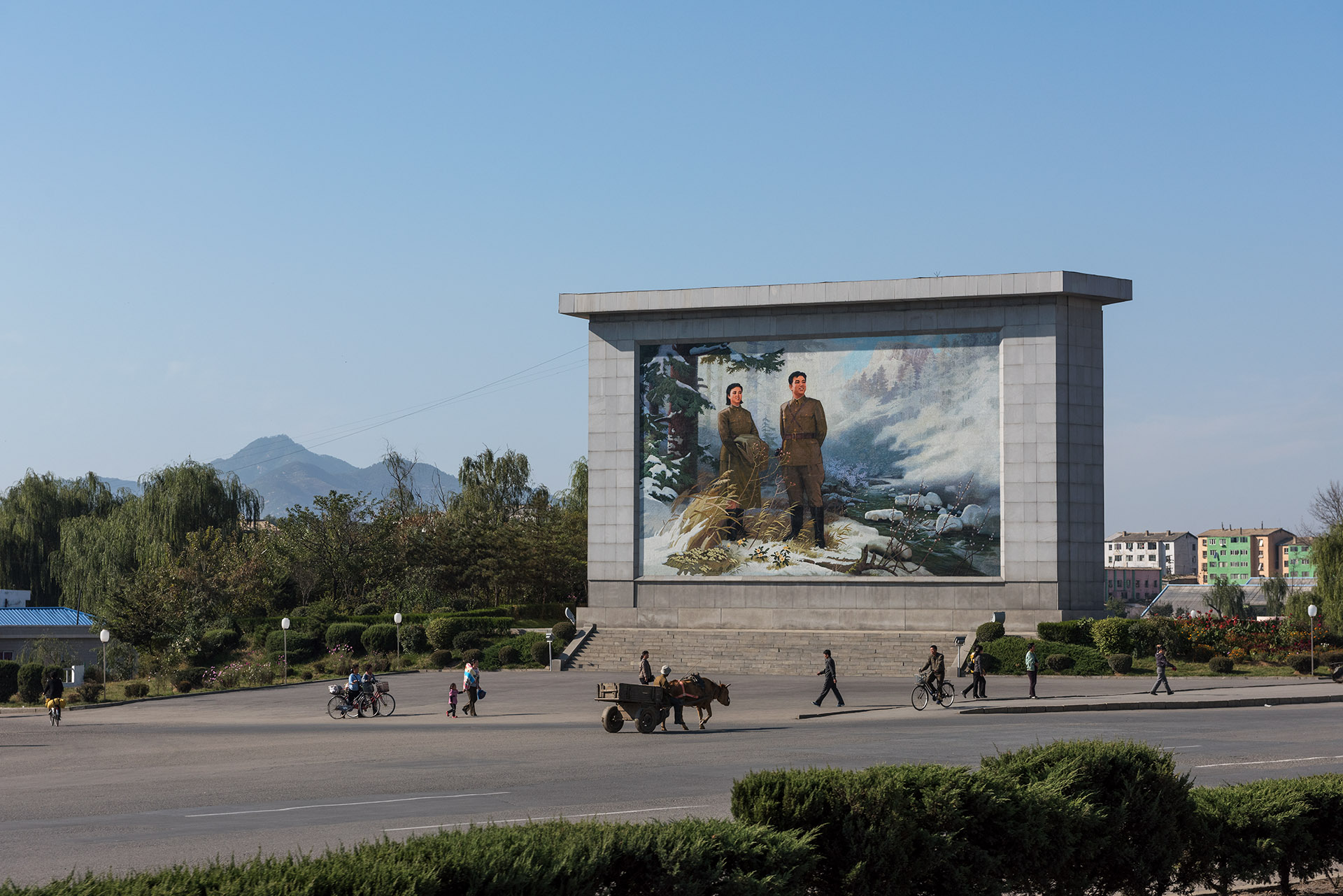
The western port city of Nampho is the birthplace of the DPRK’s famous agricultural “Chongsan-ri method and spirit”, a doctrine whereby the work incentives of the farmers are ideological and spiritual rather than material. Although cars are becoming more ubiquitous on the streets of the capital of Pyongyang, still very few private citizens own automobiles; instead, most cars belong only to government officials and high-ranking military personnel.
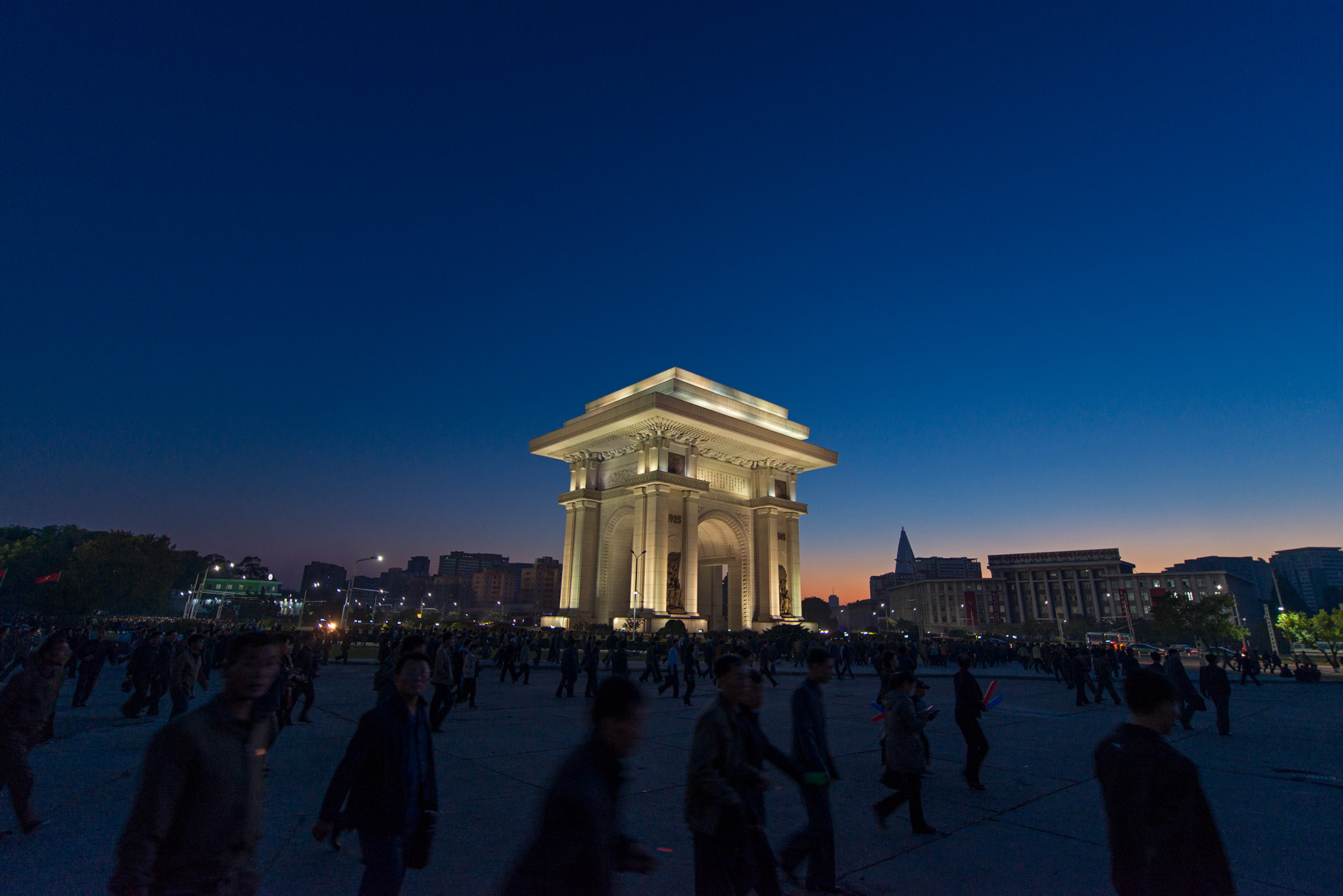
North Koreans walk past Pyongyang’s Arch of Triumph at twilight. The Arch, commemorating the DPRK’s military resistance from Japanese occupation, is the DPRK’s answer to France’s Arc de Triomphe — however, the Hermit Kingdom’s arch stands 6 meters taller.

I made this self-portrait when while hiking in the Manphok Valley near Mount Myohyang when I met a large group of North Koreans walking along the same path as myself, my friend and our minder. After lots of hellos and smiles and handshakes, the locals asked us if they could take a group photograph with us, to which we happily agreed. When the photo was captured — and before we all went our separate ways — I quickly pulled out my iPhone and snapped this amazing selfie of all of us. It was a fantastic moment and a wonderful memory of the warmth and humanity of the North Koreans I encountered throughout my visit to the DPRK.

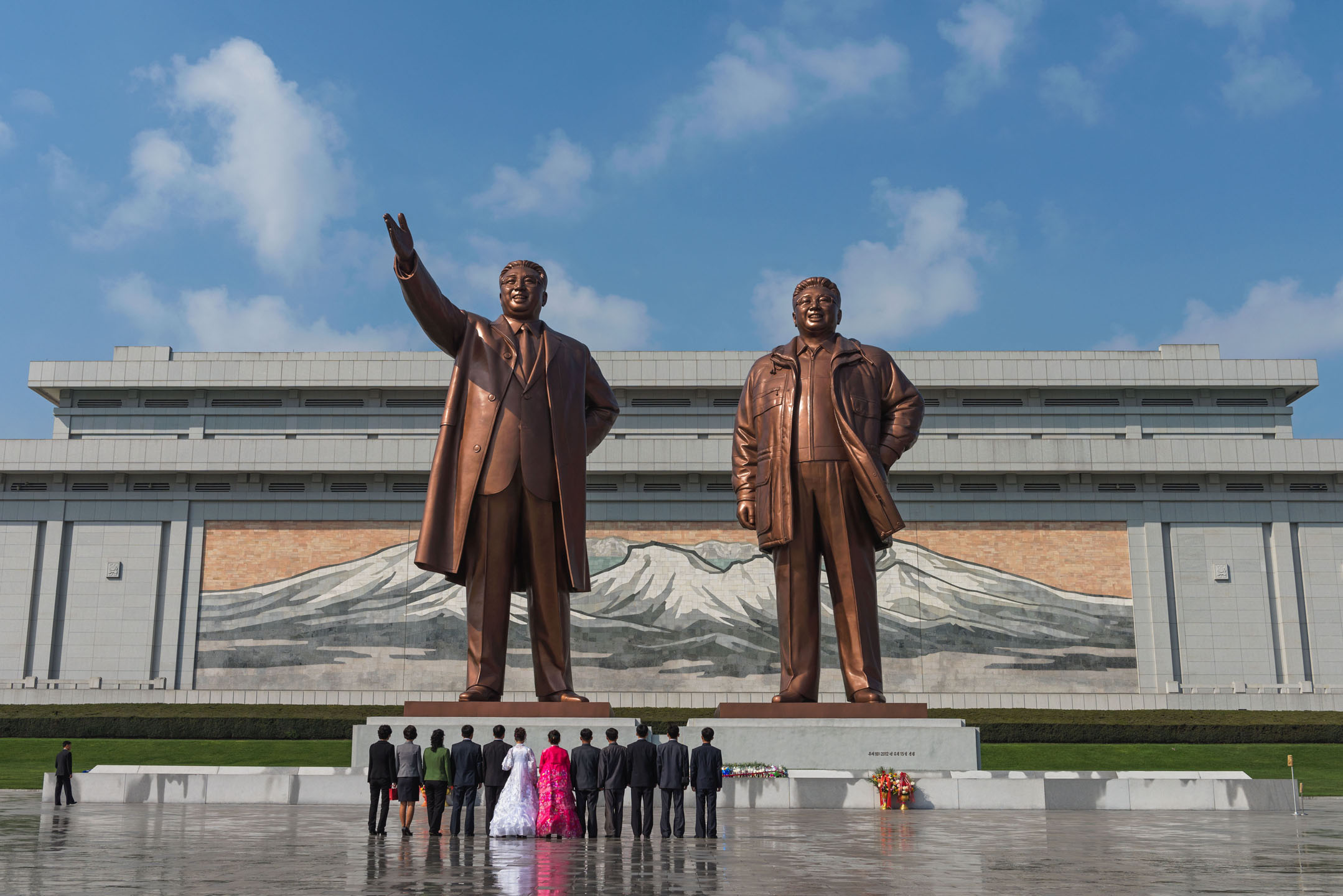
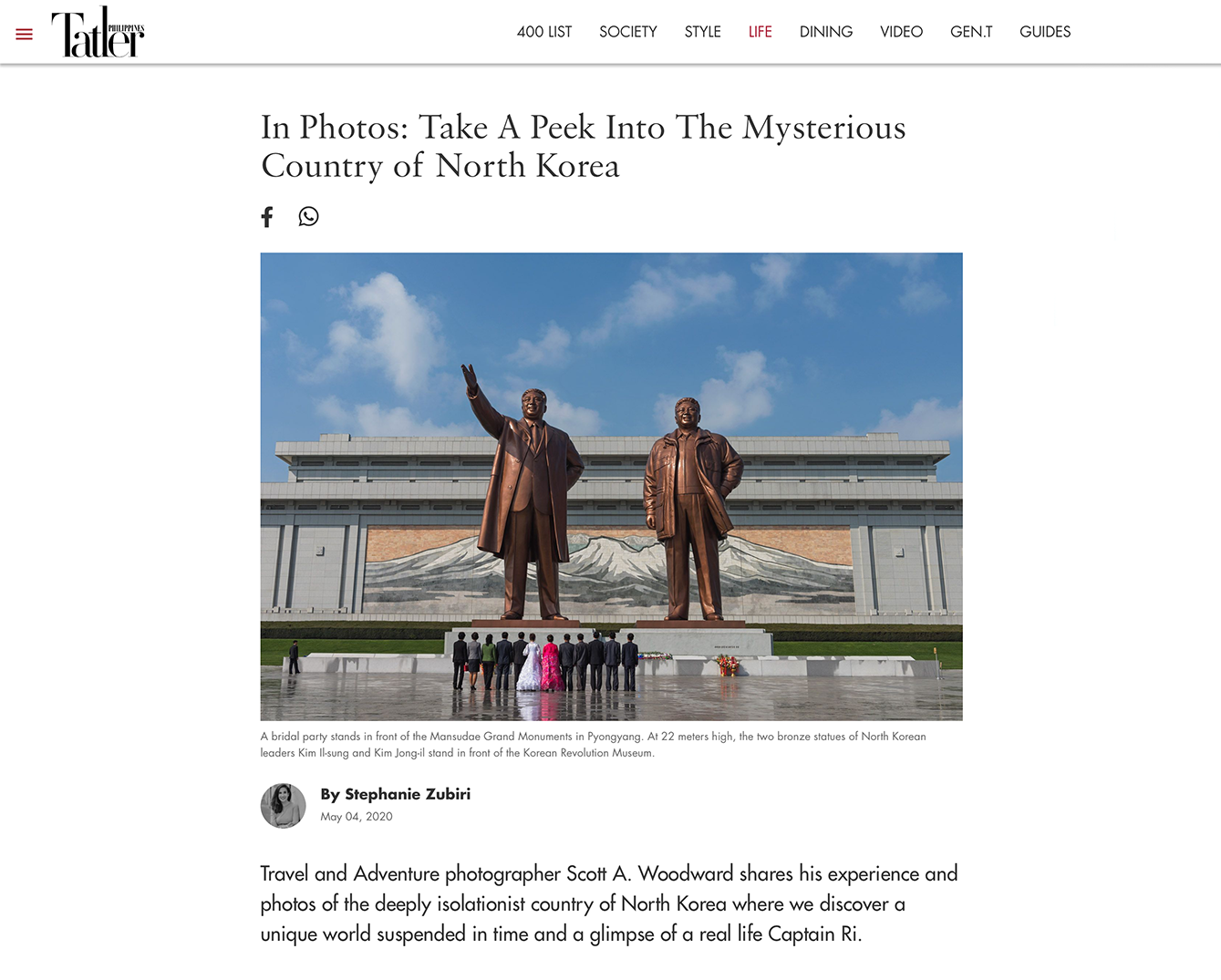
3 Comments
Join the discussion.
I love Korea, as a solider stationed there in the early 80’s. That is where I meet my wife. I love the people, their culture, and the food. I hope before I pass ,that these two countries become reunified. It’s appalling that one family controls everyone’s lives in the north. I am sure the people of the North are just as wonderful as in the south. They deserve to be free.
Thank you so much for writing, Brian. The people of the North *are* just as wonderful; as you know, the human condition is universal. In fact, on my final day in the DPRK I had a wonderful, serendipity encounter with a group of North Korean strangers — you can read about it here https://www.instagram.com/p/BiEmoDlH5To/ if you’re interested. Thank you again.
I’ve never been to North. Korea nor was I in the military. I just find it interesting how one family runs the country. Can’t figure if the people are happy or just don’t realize there’s a whole different world out there. They looked like their trapped in believing there’s nothing else for them. To bad they look like decent people who are scared to speak their mind without consequences.